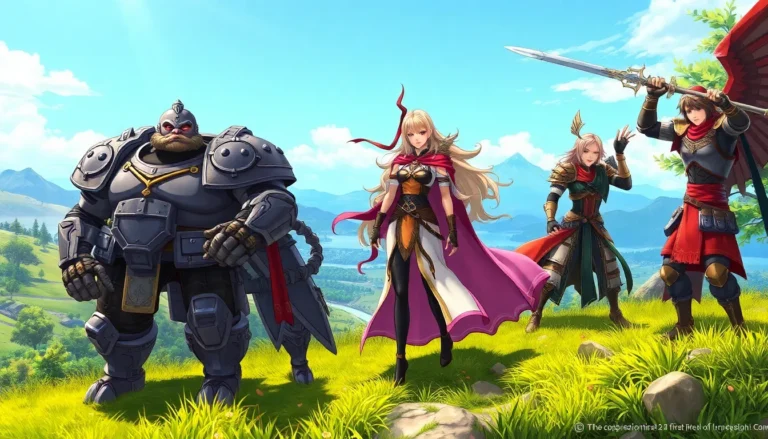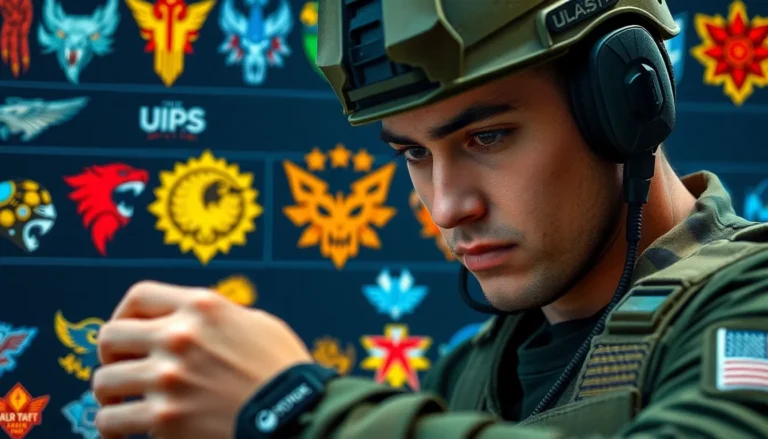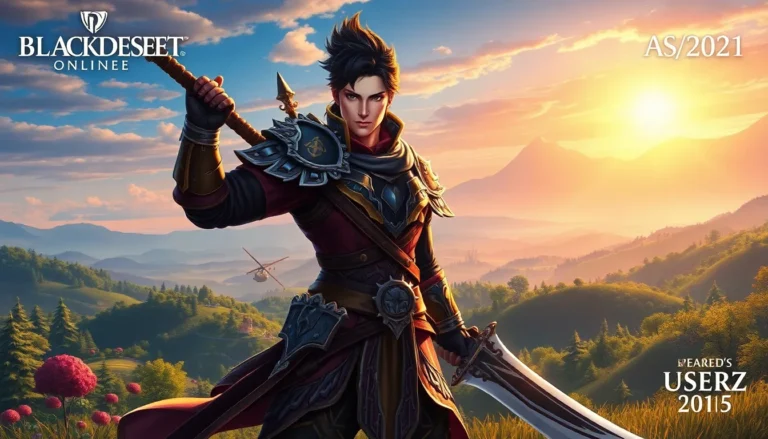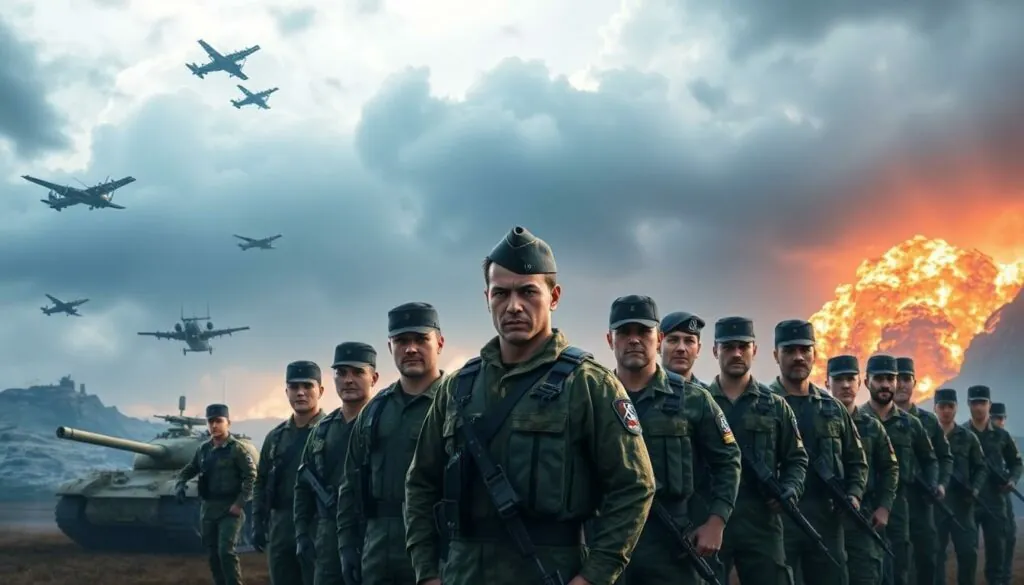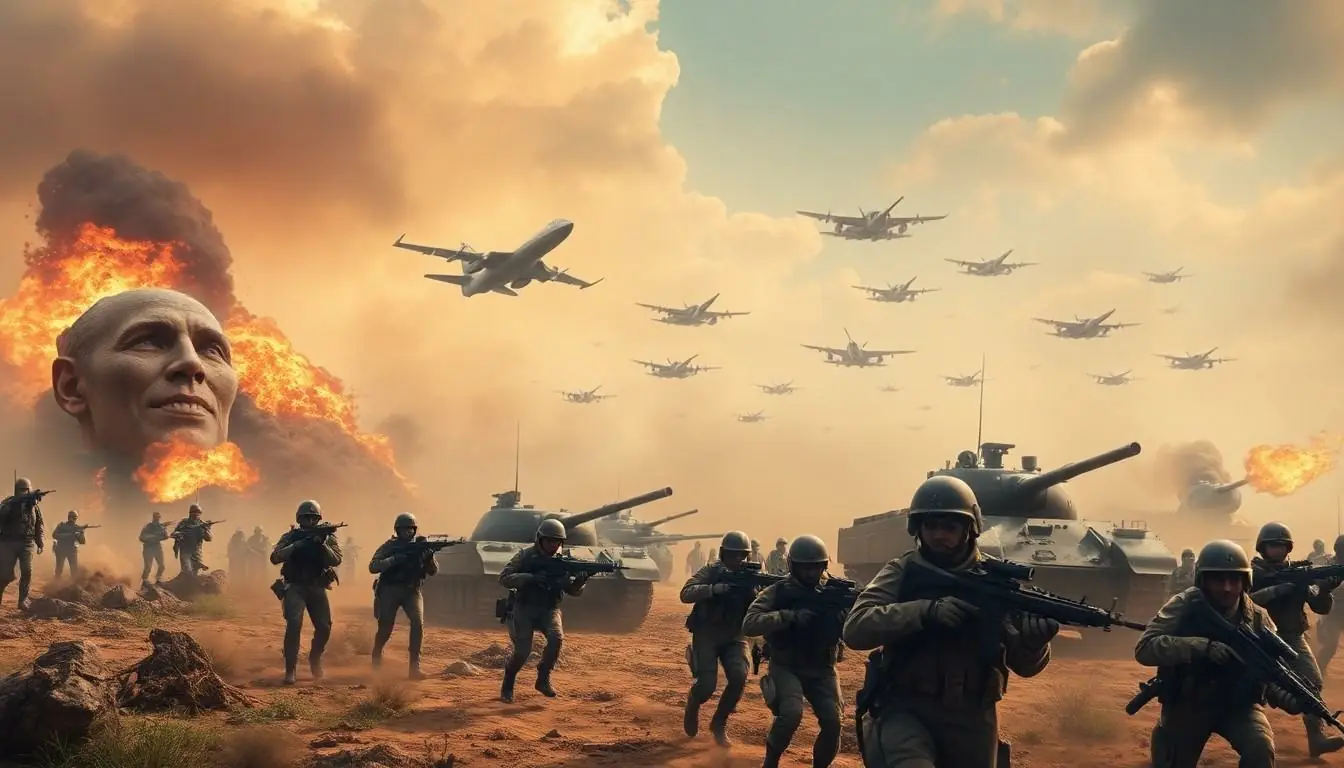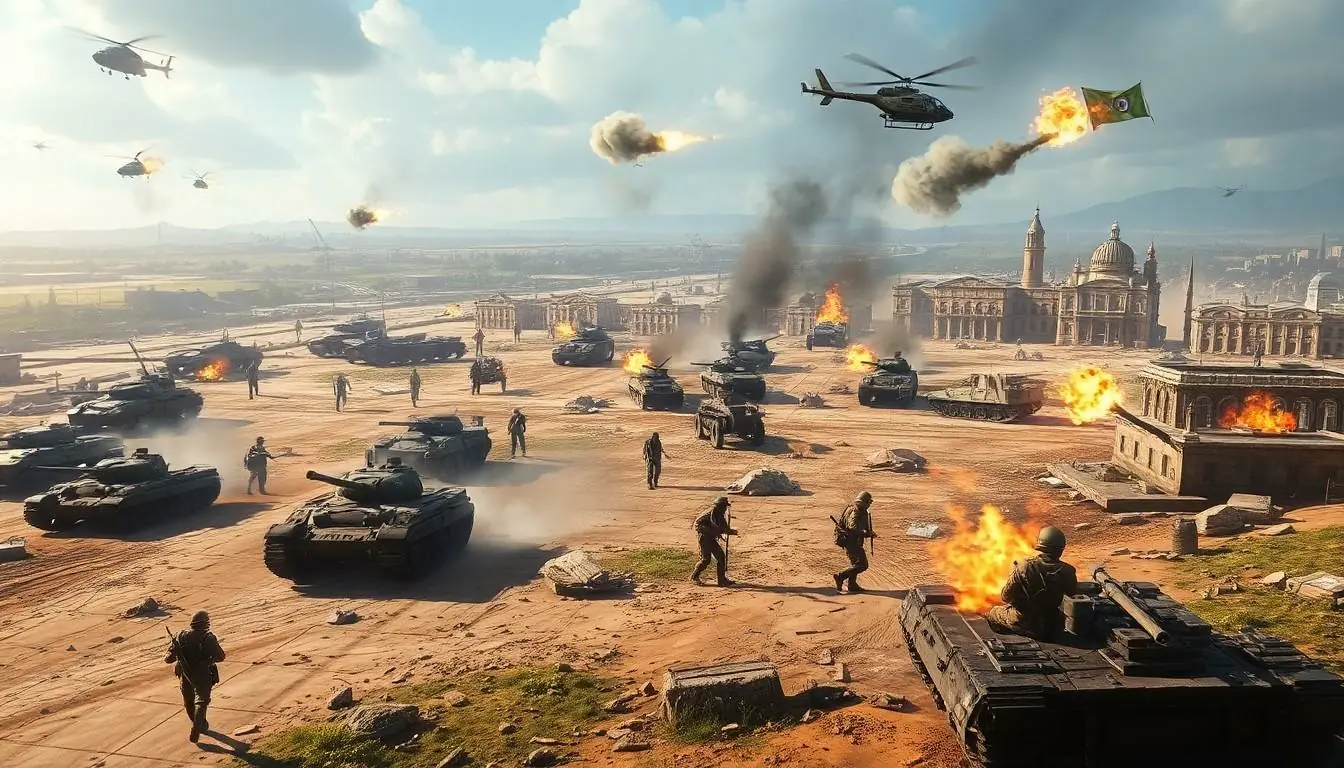Table of Contents
ToggleBattlefield games have taken players on epic journeys through war-torn landscapes, where strategy and chaos collide in the most entertaining ways. From the trenches of World War I to the futuristic battles of the near future, each installment brings its own flavor of destruction and camaraderie. If you’ve ever wondered which game to dive into next or just want to relive the glory days of virtual warfare, you’re in the right place.
This article serves as your ultimate guide to all Battlefield games in order. Whether you’re a seasoned veteran or a curious newcomer, you’ll find the timeline of explosive action and intense multiplayer moments laid out just for you. So grab your gear, and let’s march through the history of one of gaming’s most beloved franchises—because who doesn’t love a good virtual explosion?
Overview Of The Battlefield Series
The Battlefield series, developed by DICE and published by Electronic Arts, debuted in 2002. It quickly became known for its large-scale multiplayer warfare and destructible environments. Players enjoy a variety of settings, from historical wars to modern and futuristic conflicts.
“Battlefield 1942,” the first in the series, set the foundation with its emphasis on team-based gameplay. Many gamers appreciated its vehicle mechanics, allowing players to pilot tanks, planes, and ships. Following that, “Battlefield Vietnam” introduced unique maps and gameplay elements inspired by the Vietnam War, enhancing the franchise’s diversity.
“Battlefield 2” expanded the series’ popularity with improved graphics and advanced gameplay mechanics. The inclusion of modern military technology appealed to many fans. Then came “Battlefield 2142,” which shifted the series to a sci-fi setting, presenting a unique twist with futuristic warfare in a snow-covered environment.
Reinforcing its legacy, “Battlefield 3,” released in 2011, received critical acclaim for its multiplayer experience and stunning visuals. Players appreciated the balance between infantry and vehicle combat, leading to a dedicated player base. “Battlefield 4” continued this trend, adding new features and an evolving multiplayer experience.
The series evolved with “Battlefield 1,” which returned to historical roots during World War I. This approach provided a fresh perspective on the franchise. “Battlefield V,” released in 2018, continued exploring World War II, offering several single-player campaigns and an enhanced multiplayer experience.
As a dynamic series, Battlefield continues to adapt, with each installment bringing innovations to gameplay mechanics and narrative depth. Players look forward to the future of the franchise, anticipating its continued evolution in gaming.
All Battlefield Games In Order
The Battlefield series features a rich variety of titles released over the years. Below is a chronological list of all main games within the franchise.
Battlefield 1942
Battlefield 1942 debuted in 2002, setting the stage for the franchise’s signature large-scale battles. Players experienced World War II locations with expansive maps and team-focused gameplay. Vehicles like tanks and planes enhanced the combat dynamics. Destructible environments added a layer of strategy, making each match a unique experience. Features such as capture points encouraged teamwork and coordinated strategies among players.
Battlefield Vietnam
Launched in 2004, Battlefield Vietnam transported players to the Vietnam War era. It introduced new gameplay mechanics, including a diverse selection of vehicles and weapons based on historical accuracy. Classic maps like “Hue” and “Ho Chi Minh Trail” provided immersive settings. The game emphasized teamwork with features like squad mechanics. Soundtracks featuring era-appropriate music increased the atmosphere, adding emotional depth to the gameplay.
Battlefield 2
Released in 2005, Battlefield 2 brought modern warfare into the spotlight. This installment featured enhanced graphics and a reworked gameplay engine. Players engaged in cooperative play with a focus on teamwork through squad systems. Maps set in locations like the Middle East showcased infantry combat and vehicular warfare. The introduction of unlockable weapons and progression systems kept the gameplay fresh and competitive.
Battlefield 2142
Battlefield 2142 emerged in 2006, exploring a dystopian future setting. Players confronted each other in an ice-covered world embroiled in conflict. This version highlighted advanced technology with futuristic weapons and vehicles. The introduction of Titan mode redefined large-scale battles, allowing players to board massive airships. Dynamic weather events also added variability to gameplay, enhancing the strategic experience.
Battlefield Bad Company
In 2008, Battlefield Bad Company introduced a more narrative-driven approach. The game focused on a group of soldiers with humorous interactions amid intense combat. Players experienced destructible environments on maps like “Gold Rush.” Vehicles and expansive battlefields emphasized tactical gameplay. The engaging single-player campaign balanced well with robust multiplayer options, appealing to various gaming preferences.
Battlefield Bad Company 2
Launched in 2010, Battlefield Bad Company 2 expanded on its predecessor’s mechanics. Enhanced graphics and improved destructible environments revitalized gameplay. Diverse maps supported strategic gameplay variations that appealed to casual and hardcore players. The game maintained a strong focus on team dynamics and introduced new vehicle controls. Multiplayer modes were well-received, emphasizing a balance between infantry and vehicular combat.
Battlefield 3
Released in 2011, Battlefield 3 marked a return to the franchise’s roots with modern warfare. Players experienced high-definition graphics and improved animations, significantly raising the bar for realism. Vehicles like fighter jets and tanks allowed for varied tactical play. The game’s expansive multiplayer modes attracted millions of players, contributing to its success. A gripping single-player campaign complemented the multiplayer experience.
Battlefield 4
Arriving in 2013, Battlefield 4 built on its predecessor’s core mechanics with even greater emphasis on multiplayer experiences. Players navigated destructible environments and utilized a wide range of vehicles in tactical matches. The game featured new modes, including Obliteration and Naval Strike. Dynamic weather effects significantly impacted gameplay. Its expansive maps provided opportunities for both infantry and vehicular engagements.
Battlefield Hardline
In 2015, Battlefield Hardline shifted focus to a police and criminal setting. This installment was less about warfare and more centered on urban crime scenarios. Players experienced heists, police pursuits, and tactical approaches. Some familiar gameplay modes returned, adapted to the new theme. The engaging narrative in the single-player campaign combined well with innovative multiplayer experiences.
Battlefield 1
Battlefield 1 redefined the franchise’s approach in 2016 by returning to World War I. The game highlighted the brutality and chaos of early 20th century combat. Players navigated immersive maps like “Giant’s Shadow” and “Suez.” The introduction of new gameplay mechanics, including “Behemoth” vehicles, offered fresh experiences. Historical authenticity in weaponry and tactics provided a unique perspective.
Battlefield V
Released in 2018, Battlefield V explored World War II with a focus on untold stories. Players experienced diverse locations and less conventional combat scenarios. The game emphasized squad play, enhancing the tactical element of engagements. Map destruction remained a core feature, leading to dynamic battles. The option to customize soldiers and weapons gave players deeper personalization opportunities.
Battlefield 2042
Launched in 2021, Battlefield 2042 entered a near-future world marked by global conflict. With a focus on large-scale multiplayer warfare, players could engage in battles across vast maps. New specialists replaced traditional classes, offering varied skills and playstyles. Features like Hazard Zone and All-Out Warfare introduced innovative game modes. Continuous updates aim to enhance gameplay and maintain player engagement.
Gameplay Innovations Throughout The Series
Innovations in gameplay have significantly shaped the Battlefield series. “Battlefield 1942” pioneered large-scale warfare, allowing players to engage in massive battles with vehicles, which created a foundation for future titles. “Battlefield Vietnam” introduced unique mechanics like using helicopters and jungle warfare strategies that enhanced the era’s thematic immersion.
“Battlefield 2” marked a shift towards teamwork and squad dynamics, emphasizing coordination among players. The introduction of persistent ranks and unlockable weapons fostered a competitive atmosphere, encouraging collaboration. “Battlefield 2142” took a different route by adding futuristic elements, such as mechanized suits and aerial vehicles, presenting a fresh perspective on combat.
The narrative focus in “Battlefield Bad Company” brought innovative single-player experiences, featuring humor and character development that differed from prior entries. Notably, “Battlefield 3” and “Battlefield 4” raised the bar for visuals, utilizing the Frostbite engine to deliver breathtaking graphics alongside destructible environments that added a tactical edge to gameplay.
With “Battlefield Hardline,” the shift to urban crime scenarios introduced new mechanics, including heists and police dynamics. This title focused on story-driven missions, providing a different flavor from traditional military conflict. The return to historical roots in “Battlefield 1” highlighted innovative features like melee combat and a focus on individual soldier stories within the broader conflict.
Lastly, “Battlefield 2042” innovated with specialists, offering unique abilities that altered gameplay dynamics. New game modes, such as Breakthrough and Hazard Zone, exemplified the series’ adaptability in responding to player preferences. Each installment contributed distinct gameplay elements, maintaining the franchise’s engagement and popularity in the gaming community.
Community Impact And Legacy
Battlefield games significantly influenced the gaming community and industry. Engaging multiplayer modes fostered teamwork and strategy, creating a dedicated fan base. Players often return for immersive experiences and innovative gameplay features with each installment.
Cultural references stem from the franchise, appearing in discussions around military conflicts and the evolution of warfare in video games. Esports communities embraced titles like Battlefield 3 and Battlefield 4, reflecting a competitive side of gaming. These games hosted tournaments, drawing in players and spectators for thrilling matches.
Impact extends beyond just gameplay. The series inspired various forms of media, including fan art, short films, and community events that celebrate its rich narrative and gameplay mechanics. By encouraging player engagement, Battlefield cultivated a vibrant online community.
Legacy elements manifest through skill development and community-building. Gamers develop communication skills and foster friendships. Over time, cooperative play and shared experiences solidified friendships among players.
Keeping pace with technology, the franchise embraced advances in graphics and gameplay mechanics. Each title introduced elements that shaped not only its identity but also impacted the broader gaming landscape. Innovations established benchmarks for future developers.
DICE’s commitment to community feedback shaped updates and expansions. Regular player interaction, whether through forums or social media, allowed fans to voice their opinions. This dialogue created an environment where the community felt heard and valued.
The Battlefield series remains a cornerstone of modern gaming. Its dedication to immersive experiences and community engagement keeps players invested. As new titles emerge, the series’ impact on gaming culture continues to be felt, ensuring its lasting legacy.
Conclusion
The Battlefield series has undeniably shaped the landscape of multiplayer gaming. Its commitment to immersive experiences and innovative gameplay keeps players engaged across generations. Each title has contributed to a rich legacy that resonates with both newcomers and veterans alike.
As the franchise continues to evolve, it remains a testament to the power of community and creativity in gaming. From historical battles to futuristic conflicts, Battlefield’s journey reflects the changing dynamics of warfare and player interaction. With each new release, fans eagerly anticipate what the series will bring next, ensuring its place in gaming history.



